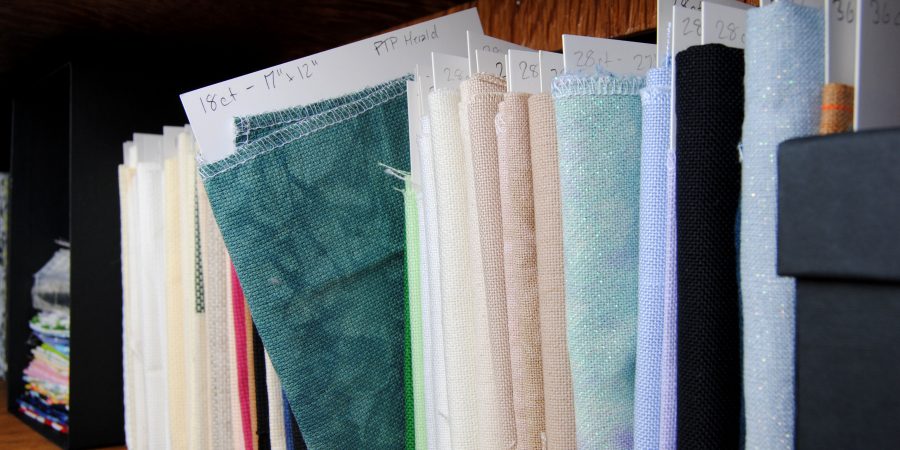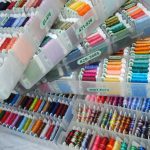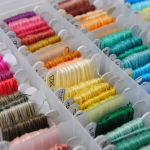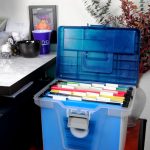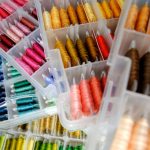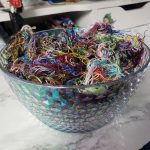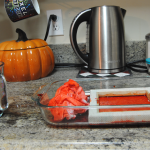Frequently we see people asking how to store their embroidery thread. I’ve been asked the same many times, to the point I put together a blog post outlining my thread storage method. Sometimes we see people with questions on how to keep track of patterns. Maybe a few will ask where to store their hoops, beads, needles, etc. However, rarely do I see people ask the same about fabric storage.
This post may contain affiliate links. If you buy something using one of these links, I earn a small commission. However, there is no extra cost to you. Thanks for understanding! Learn more in my Disclosures & Privacy Policy.
Now, some stitchers like to work in ‘kits’. They’ll keep the fabric, pattern, and threads for a specific project all together in a bag. This has even spawned somewhat of its own industry; you can buy all sorts of cute project bags to keep your projects organized!
But what about the rest of your fabric? I surely can’t be the only one that keeps extra aida and various counts of evenweave on hand for new projects, right? Surely there must be others hoarding fabric for when inspiration strikes or your favorite designer suddenly drops a new pattern you just have to stitch.
Most stores will sell you fabric in a convenient plastic bag, and I’m guessing a lot of you just toss that in a drawer or a plastic bin somewhere and call it a day. Some come in tubes, but those probably get shoved in a closet until it’s time to start your project.
Table of Contents
Out of sight, out of mind
For the longest time, that’s how I stored my fabric too. But one day I realized I never actually used my stash this way. I’d always end up forgetting what I had and buying new fabric and this just wasn’t sustainable.
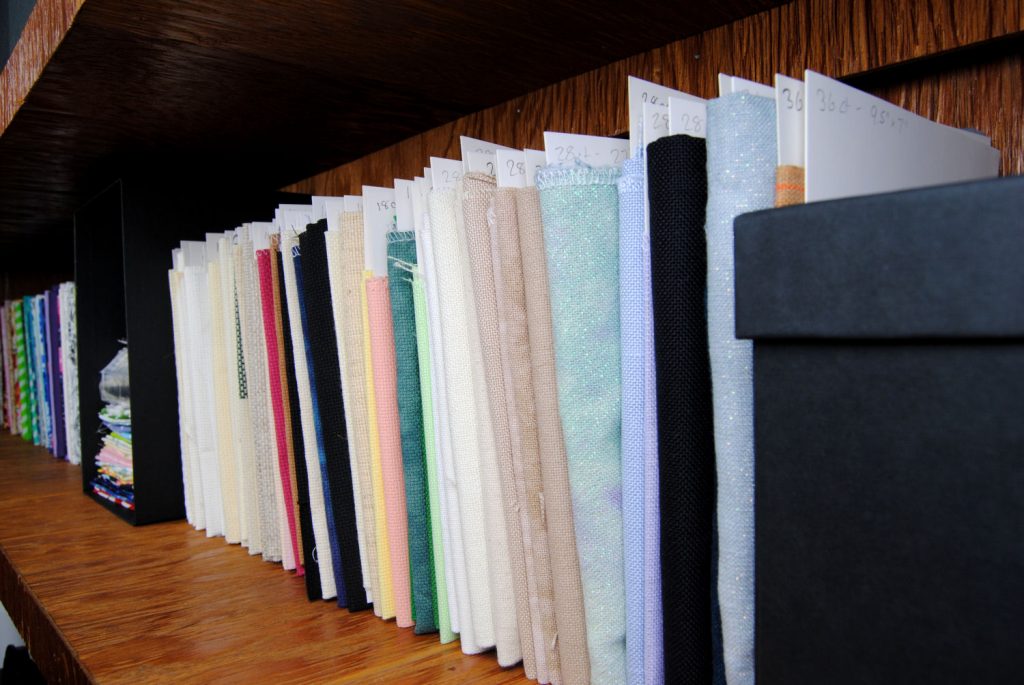
Looking around online I found tons of cute ways to store quilting fabric. Shelves and shelves of colorful fat quarter rainbows. Well, I wanted that for my stitchy fabric, too.
One day, I came across this tutorial on folding fabric to a specific size. And I finally knew what I had to do.
I picked up a pack of comic book board, as I’d seen this mentioned in many a fabric storage tutorial. In fact, look at the amazon reviews in various listings for comic book board. MOST of them were written by people using them to store quilting fabric!
After measuring my shelf, I decided to use ‘Golden Age Size’ boards and cut them in half. This gave me 7.5″ x 5.25″ boards to work with. That way, a single pack was more than enough for all my fabrics, fat quarters included.
Perfecting your folding technique
For my cross stitch fabric I modified the folding technique a little. I wanted some of the board to stick out from the top of the fabric.
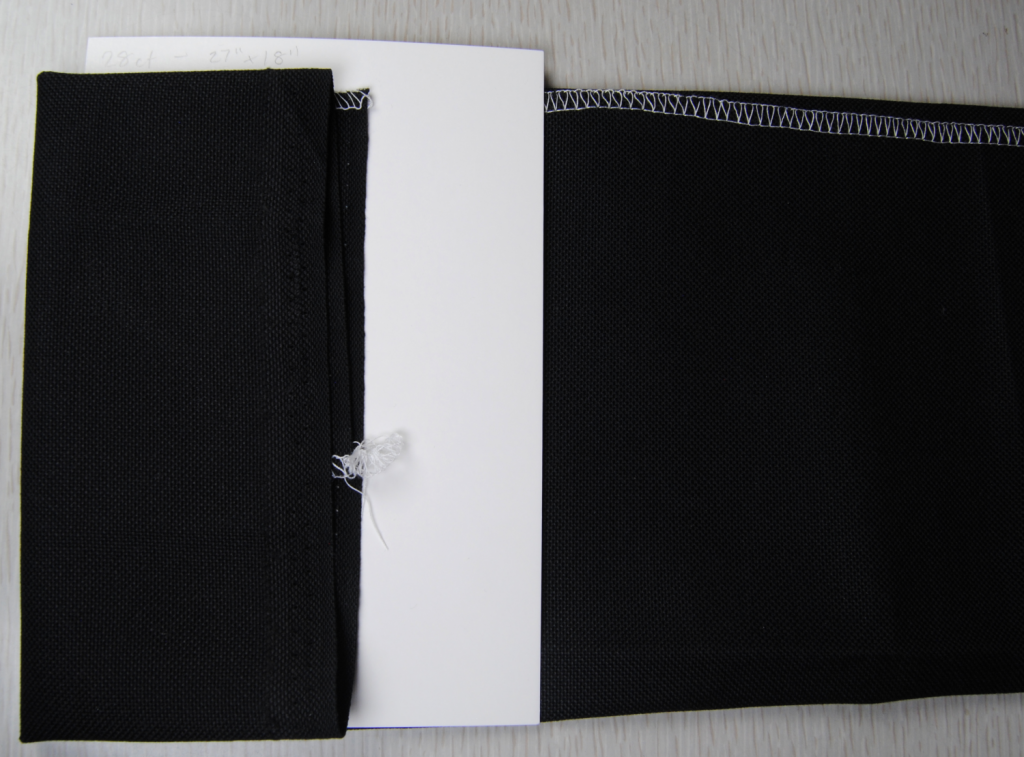
Folding my fabric to a half inch less than the height of my board, I then wrapped it around the board to create my small bolt of fabric.
At the top of the board, I like to keep track of a few things. The fabric count, the size of the fabric, and any other notes I think are important to keep track of.
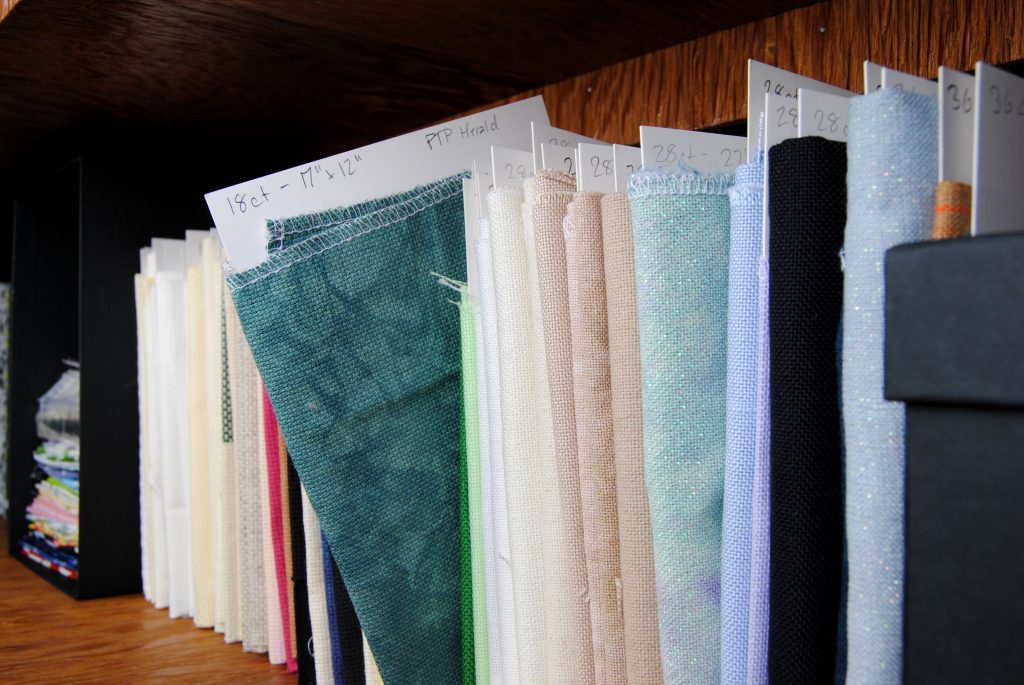
In this case, I noted that it was a PictureThisPlus fabric in the color ‘Herald‘. Just in case I need to order more in the future.
As another example, I might write ‘needs frogging’ if it was a thrifted piece. One with a small start on it that would need to be ripped out or cut around before using the fabric.
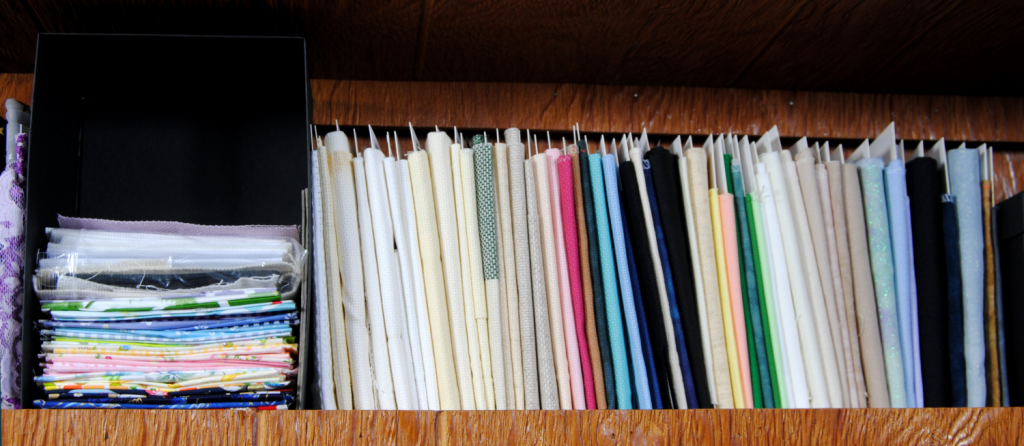
Anything too small to go on such a bolt, get folded to the size of this cardboard box on the left. It gets stacked or bundled in a small plastic bag. My too-small quilting fabrics are in there as well, keeping that box pretty enough to not be covered up and forgotten about in a drawer somewhere.
Other fabric to keep on hand
Speaking of quilt fabric, I used the same method to organize those, but without the extra bit of card along the top!
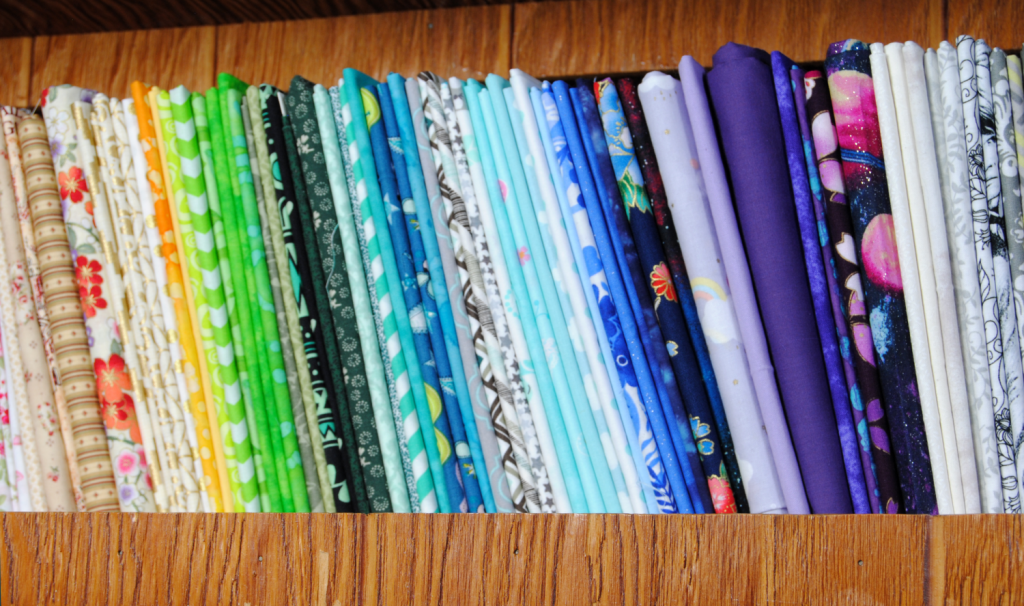
I mostly use my fat quarters as photo backdrops when taking pictures of my latest cross stitch finish. They come in handy for backing projects as well, though. And this year I’ve been slowly learning to sew!
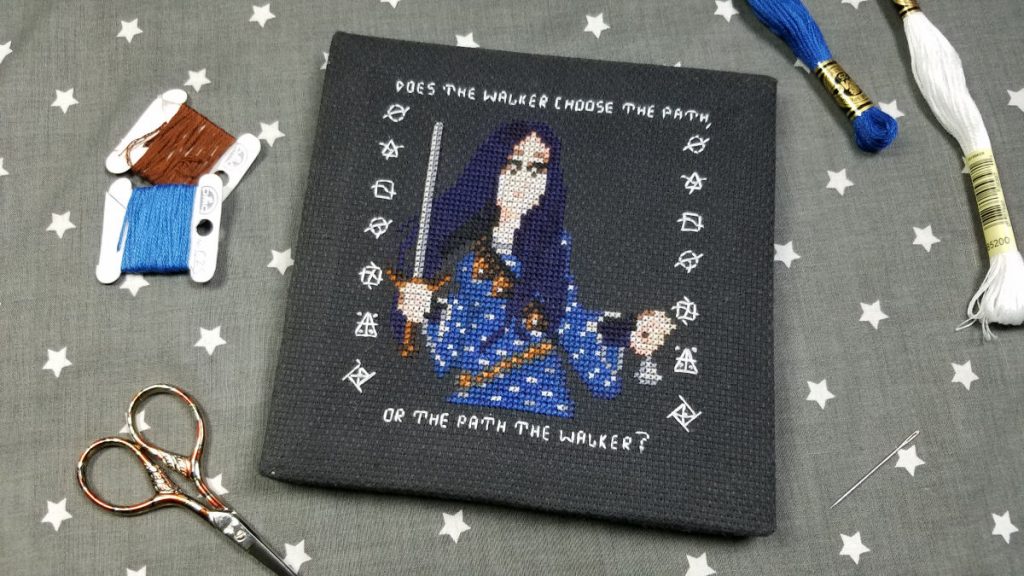
Keeping track of what fabric you have
Having a pretty shelf is good, but how do you keep track of what you own while out and about?
Maybe you’re at your LNS trying to remember whether or not you had PictureThisPlus’s Mystic or Phantom at home. You’re just trying not to pick up a duplicate.
Perhaps you’re in another room or at work when you finally find the time to plan your next project. Whatever the case, we can’t always stop and stare at our shelves to make a fabric decision.
For this, I recommend Trello. Heck, I recommend Trello for nearly everything. Keeping a to-do list. Tracking your pattern collection. Meal Planning & recipe lists. A list of of which board game expansions you do or don’t own. Planning design ideas. Keeping track of how much your houseplants have grown.
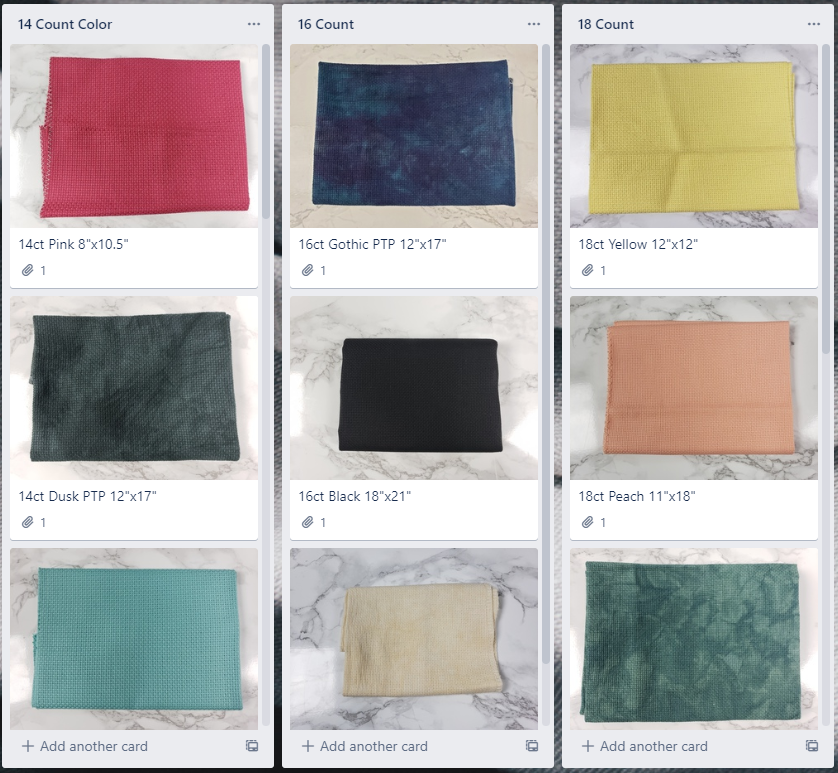
For the sake of this topic though, I use it to keep track of what fabrics I have. You can see my fabric trello board here. Like the physical boards I keep the fabric on, I make note of the count, size, and color where possible.
Also some quick and dirty phone photos to get a visual look at the colors. Just to inspire me while designing, and to keep me from buying more of the same while out and about.
Trello is also completely free! They do offer some enhanced features if you end up using it for everything like I do, but for most things the free service is more than enough.
What else is on my shelf?
For those curious, here’s what the rest of my shelves look like. The rest is not nearly as pretty as the fabric row. But I’m just glad to have all this space to grow into as I build up my stash.
I ‘m lucky enough to have this gorgeous built in desk in the house we’re renting. This is the first time I’ve been able to spread out in my own home office. I’m super grateful for it. I don’t use it as a desk though, I have a larger L-shaped desk for that. However, it works out great for storage!
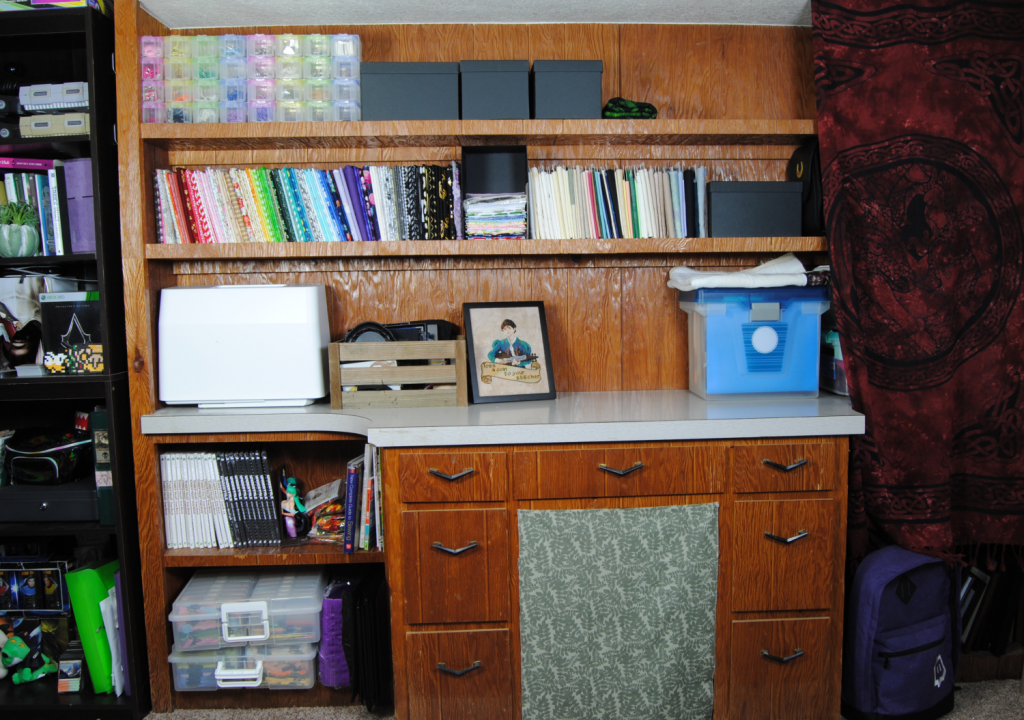
You’ll see my thread skein photo boxes in the bottom left, along with some extra copies of my books.
Next to my sewing machine is a crate full of finished stitches I just don’t know what to do with. And the box right is a filing cabinet with all my printed patterns, magazines, and art prints. My plastic canvas sheets go in there, too!
Hiding behind that makeshift curtain on the right is more materials. Cotton Batting and fuseable interfacing. Various scraps of felt. And convention display bits like extra grid hooks and jewelry holders.
In the drawers and behind that mini curtain is pretty much entirely packing material. I keep boxes and air packets from my many amazon purchases underneath. Most of the drawers are full of bubble mailers, bubble wrap, or packing tape.
How do you store your fabric?
Enough about me. How about you? Join the conversation over on Discord and let us know how you keep track of all your aida!

